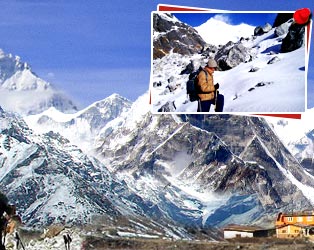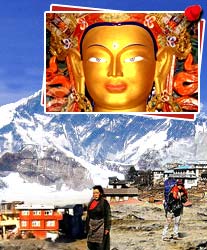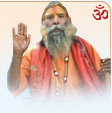Ladakh is known for its Striking landscapes and
Buddhist monasteries. The frescos and other architectural features of
the monasteries are the trademark of ladakh. Leh is the capital of this
region since the 17th century. Not far from Leh, Shey is the oldest
capital of Ladakh from where its earliest Tibetan kings ruled.
Places of Worship in Ladakh
Thiksay Monastery:
Upstream of the Indus from Leh is the monastery of Thiksay. It is a
distance of 17 km. It is the most famous monastery with amazing
architectural details. It is known for its beautiful frescos.
Buddhist Gompas:
Buddhist monastries and gompas are repositories of Buddhist images and
artifacts and the fountainhead of Mahayana Buddhism. Hemis is the
biggest Gompa of Ladakh, was established by king Singe Namgyal in the
17th century. It is famous for its magnificent summer festival, which
the birth anniversary of Guru Padmasambhava. The largest thangka in
Ladakh is to be found here. It is unfolded only once every 12 years.
Jamia Mosque:
This mosque is located in the heart of Leh Bazaar; this historic mosque
was built during the 17th century.
Moravian Church:
Moravian missionaries built this church during the 19th century.
Among the famous historic gompas are Stakna, located at a distance of
25 km, Chemrey, Takthok and Matho located at a distance of 50 km and 26
km respectively. The Takthok monastery incorporates a cave associated
with the journey of Padmasambhava to Tibet. Matho is famous for the two
oracles who make a public appearance during the annual festival.
Downriver fronm Leh are the monasteries of Spituk at a distance of 7
km, Phyang at 17 km, Likir at 53 km, Alchi at 69 km, Ridzong at 73 km
and Lamayuru. Alchi, known as Chhos-Kor (religious conclave), dates to
the 11th century and its five temples have exquisite murals of the
Ajanta genre.



